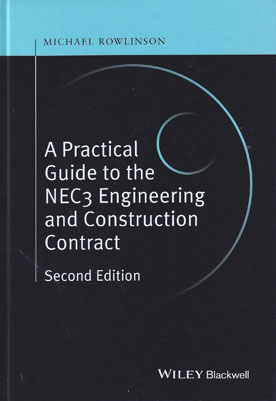
The device(s) you use to access the eBook content must be authorized with an Adobe ID before you download the product otherwise it will fail to register correctly.
For further information see https://www.wildy.com/ebook-formats
Once the order is confirmed an automated e-mail will be sent to you to allow you to download the eBook.
All eBooks are supplied firm sale and cannot be returned. If you believe there is a fault with your eBook then contact us on ebooks@wildy.com and we will help in resolving the issue. This does not affect your statutory rights.
Launched in 1993, the NEC Engineering and Construction Contract has become one of the UK's leading standard forms of contract for major construction and civil engineering projects.
The third edition, popularly known as NEC3, is a process based contract embodying project and commercial management best practice, so its basic philosophy differs from the more adversarial approach of other standard construction contracts.
Since the first edition of this book, the third edition of the contract has seen the introduction of a new secondary option for use in the UK and amendments to a number of clauses. In addition, in September 2011, changes were introduced to cater for the amendments to the Housing Grants, Construction and Regeneration Act 1996 contained in the Local Democracy, Economic Development and Construction Act 2009, which became effective for all new contracts entered into from 1 October 2011. These amendments have been incorporated into the text.
A Practical Guide to the NEC3 Engineering and Construction Contract will be useful to everyone in the construction industry working on a project under this contract. It will be of interest to the complete construction supply chain, including employers, construction professions, contractors and sub-contractors, as well as consultants and lawyers advising any of these parties, either in the preparation of contract documentation or the day to day management or the resolution of problem situations which may arise.